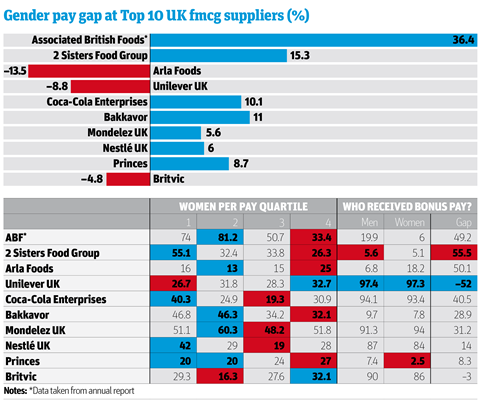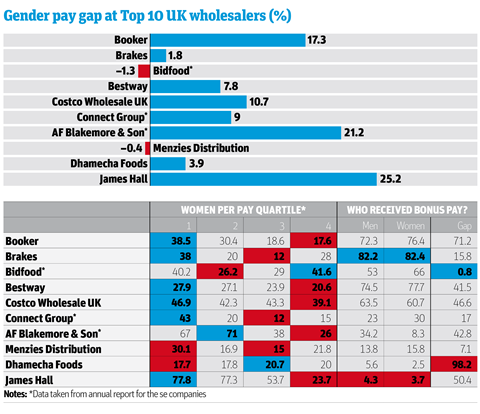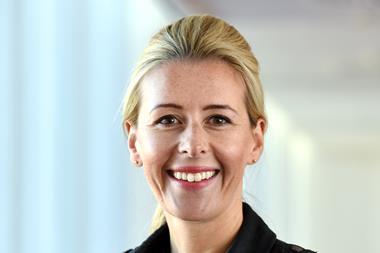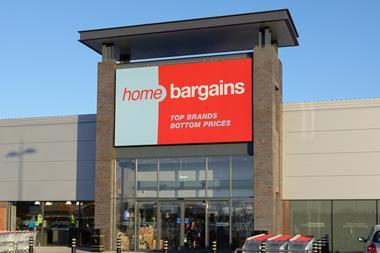With the publication of data on the gender pay gap now a legal requirement for companies with more than 250 staff, it seems eight out of 10 are paying women less than men on average. A closer look at the figures – and what lies behind them – reveals serious challenges for the food and drink sector
Brits hate to talk about their feelings. Or yours. Or make unsolicited small talk with strangers on public transport. But of all the many British idiosyncrasies it is the downright refusal to discuss our pay cheque that runs deepest.
Believe it or not, we’re seven times more likely to share details of sexual history, infidelities and even STDs with a stranger than what we earn, according to a 2015 study by University College London.
So was it this taboo that prompted the introduction of mandatory gender pay gap reporting? After all, the government tried asking nicely. In 2011, its ‘Think, Act, Report’ initiative implored companies to close their pay gaps voluntarily. But three years later, despite 200 companies pledging their support for the shift toward greater transparency on gender, only four came through with any kind of data. Four. Of the 10,000-plus that employ upwards of 200 people in the UK.
So in 2015, then prime minister David Cameron set the wheels in motion to force them to open up instead. Now all companies that employ more than 250 staff are legally required to publish annual data setting out the average gap in hourly rates between male and female employees, how many men and women received bonus pay and how much, and the gender split at different levels of the business.
The first deadline for that data arrived to much fanfare earlier this month. And sadly, if unsurprisingly, the findings suggest it was far more than British prudishness that lay behind a reluctance to willingly give us an insight into pay.
Across all 10,353 businesses that shared their data for 2017, there was a mean average pay gap between men and women of 14.4%.

For every £1 earned by men, women earned 85.6p. Eight in 10 companies are paying their female staff less than males on average, some by substantial margins. Pick whichever stat you like, none look good. As our research shows, across the 10 largest grocers this average gender pay gap was 12%. For suppliers 6.6%. And wholesalers 9.5%.
Grocery is far from the worst offender, with all sectors below average, and no businesses face the cavernous 59% gender pay gap execs at HSBC are trying to explain away. But with 80% of leading grocery firms paying female staff less on average, and a 33.1% average gap in bonuses paid out (up to 39.1% among wholesalers) the sector shouldn’t exactly be feeling smug either.
As Professor Susan Vinnicombe of Cranfield School of Management puts it: “It’s a real hornet’s nest all this has uncovered, coming at the same time as the Me Too and Time’s Up campaigns, where thinking on this issue is becoming joined up.”

The landmark equal pay claim facing the mults
“We’re challenging the stereotypes that as a society we’ve all bought into,” says employment lawyer Paula Lee of the £4bn lawsuit her firm Leigh Day launched against Tesco in early 2018 on behalf of more than 1,000 employees. Their contention is that shop floor staff, made of up predominantly women, earn considerably less than those, predominantly men, working in the supermarket’s distribution centres. The difference can be up to £3 per hour, or 37%. That difference, they claim, breaches the third limb of equal pay law requiring work of ‘equal value’ to be paid the same.
Previously, UK law only recognised equal pay claims related to ‘like work’ where people performed identical roles, or work ‘rated equivalent’ where independent experts benchmarked salaries into bands. But in 1983 the EU took the UK to court, requiring it to recognise claims as regards work of ‘equal value’ too. In other words, different work but requiring equal effort and skill.
Often related to “the five Cs of cleaning, catering, cashiering, caring and cooking” retail is susceptible to these claims, adds Lee. “Where you have high concentrations of women performing these traditionally female roles, and men in traditional male roles, that’s where pay may be at odds. Often where we see gender segregation we see a gender taint.”
At Asda a similar claim, also brought by Leigh Day, has been ongoing since 2014. Fifteen thousand current and former employees claim their roles were unfairly undervalued. If successful the case could cost the grocer more than £100m. In 2017 the business lost its most recent appeal but is now taking the case to the Court of Appeal and insists pay rates differ “for legitimate reasons.” Tesco says it “will be defending this claim” and “works hard to make sure all our colleagues are paid fairly and equally for the jobs they do”.
For Lee though “these claims against big private sector employers are shining a light on why traditional women’s work is undervalued. I think it will have a seismic change on how people view things. It can’t not. Along with gender pay gap reporting if you’ve an ounce of curiosity, it’ll make you think.”
It’s important to point out these statistics aren’t proof that male and female colleagues in equivalent roles in the industry are taking home grossly different pay - though it doesn’t rule that out either, with a series of landmark equal pay claims underway against major UK supermarkets (see box, left) with Paula Lee, the Leigh Day employment lawyer leading the £4bn claim against Tesco, insisting the problem of unequal pay “is very much alive and well”.
Instead the insight provided by the gender pay gap data is of women remaining far less likely to occupy the most senior - and therefore highest-paying - roles in food and drink. At Tesco, for instance, though women occupy more than two thirds of the lowest-paid roles (66.9%) they only make up 41.1% of the highest, leaving the mult with an average pay gap of 11.5%. Meanwhile at the UK’s largest supplier, ABF, despite women making up the overwhelming majority of the workforce in the lowest quartile, at 74%, this tapers off to only 33.4% when looking at the make-up of its most senior staff. This leaves the business with the biggest gap of all 30 leading food and drink businesses included in this research.
Skewed results
Conversely, where businesses have worked to create a more balanced representation of genders throughout the business, the expectation would be that the gender pay gap would narrow. Or invert. For example, at Unilever UK, where women make up around 30% of the workforce at all levels of the business and occupy more than half of all management positions, the data shows women on average earn 8.8% more than men.
Even that interpretation of the data is sweeping, though, with the incredibly broad calculations required by government often leading to skewed results. Take Ocado. The online supermarket is the only top 10 retailer to pay its female staff more on average than men, albeit by a tiny margin of 1.4%. And yet women are chronically under-represented across the business, never making up more than a quarter of the workforce at any level.
The only reason Ocado comes out with a negative pay gap is that it employs even fewer women in the junior levels of their business than at the top, leaving an average hourly pay that appears to favour women.
It’s a similar story at both Britvic and Arla Foods - both businesses that have so few women working at their male-dominated junior manufacturing level that the pay of the (marginally) higher number of women working in their office and management roles creates a pay gap in favour of women.
In other words, for all the front page stories it’s generating, the gender pay gap is a crude measure at best. Coupled with the fact it excludes 99% of all registered businesses in the UK, which employ 249 staff or less, does it hold any value at all?
“Yes, it’s a blunt instrument,” says Marnie Millard, CEO at Vimto owner Nichols. “But you’ve got to start somewhere and it makes the debate live and relevant.” It’s why Millard released details of the mean average pay gap of 5% at the business even though its size meant it wasn’t required to by law. “We want to be an employer of choice and so we were quite pleased to share that before we had to. It’s part of our ongoing position on transparency.”
“Gender pay gap reporting is really important because if boards or companies publish data, they have to explain and understand that data,” adds Fiona Hathorn, managing director of Women on Boards UK. “Prior to collecting it, most companies had no knowledge or understanding of it. Simplistic as this data is, it’s a start. The question is, what now?”

Quite. Public outrage aside, a raft of well-documented research shows that the more diversity among decision makers at a business, the better. Only recently McKinsey & Co found that those businesses with a more equal balance of men and women are 15% more likely to outperform their competitors, while those in the top quartile of gender diversity are 21% more likely to enjoy above average profitability. It therefore makes both economic - and ethical - sense to attempt to narrow the gap now sitting in black and white.
Many of the sector’s biggest businesses have already committed to doing just that. Tesco will aim for 30% female board representation by 2020 and for 30% of all senior roles to be occupied by women, Sainsbury’s says it is working toward a 50/50 gender split across its ‘retail talent development and progression programmes,’ while the Co-op (with the largest pay gap across all the major supermarkets) insists it is part-way through a 10-year diversity and inclusion strategy.
But for Hathorn, headline commitments, often announced with little granular detail, are concerning. “This is a big change programme in terms of effective leadership, cultural change and inclusion. Companies will need to set intelligent targets. Setting out what you want to achieve with a random date in a panic fashion concerns me. We want to champion small changes companies are making with regards to their culture.
“By culture I mean ‘the way we do things round here’. And if the way we do things round here is always to recruit from Oxbridge, to always recruit from the friends of our mate that heads up that division that recruits in his own image, well, we need to put processes in place and recognise it takes time to change.”
Slow pace of change
Not least as turnover at the top is painfully slow. That was one of the challenges faced by FTSE 100 companies tasked by Lord Davies in 2010 with getting 25% women on boards in five years. “At board level we have an average turnover of 14%, though during Davies’ review some companies pushed that up to 17%,” says Vinnicombe, who worked closely on the initiative.
As a result the target was largely achieved through women being swiftly appointed to more flexible non-executive director roles, with the same women appointed to multiple roles in some cases. “At the executive committee level there’s an even lower turnover and you might be lucky if one person leaves in a year. If one vacancy comes up per year - and even if there’s a 50% chance of it going to a woman - you can see that’s going to take a long time to change.”
The fact that brewer AB InBev “is a fast-paced organisation where people are being promoted and you don’t get that static senior management team” is one of the factors that lies behind its 8% pay gap in favour of women, believes its head of communications Louise Fernley. “We always have new and different people coming to the table.”
“You need turnover of that top tier and if you’re a company with a very fat and happy senior management team that don’t want to move for a promotion they won’t,” adds Hathorn. “Just because we have this data, don’t expect companies to materially change over the next two to three years.”
Shifting the needle on this first tranche of gender pay gap data will require businesses to be committed to the long game, then, with intelligent, incremental changes in policy to address the two biggest causes that lie behind the current pay gap: a lack of women being drawn to the sector in the first place, and the thinning of the female workforce as you move steadily up in seniority.
Why fewer women?
This first element is most potent in the manufacturing and wholesale sectors, where female representation rarely breaches the 50% threshold at any level of the business. Attracting more women to the sector - and championing their progression - was one of the reasons Laura Ryan, who has worked for AHDB for more than a decade, founded Meat Business Women three years ago.
“It really struck me attending industry events you’d sit there and you’re one of only a few women in the room,” she says. “For me, really passionate about the meat industry, I wanted to show it’s a great place to work and nurture female talent in the sector. The majority of my friends aren’t in agriculture so when you say you spend a lot of your time going round abattoirs and dealing with the trade it puts them off, so getting a group together to talk about key skills and key topics was a great opportunity.”
With committee members from Morrisons, Moy Park and Cranswick, the group now organises networking events and workshops “to showcase the sector as one that isn’t just about processing animals but one that works on an exciting food product with lots of different opportunities for females”.
It’s a similar aim at the more recent Women in Wholesale initiative. “What we’ve found is not just at wholesalers but fmcg brands that supply the channel, they want women in their senior teams but they just don’t have the applicants,” says founder Elit Rowland. “The main purpose was to help individuals to become bolder and braver and more confident in putting themselves forward, but also to get businesses to break out of that mindset.”
All work that links closely to the second, arguably more challenging factor behind the gender pay gap. The fact that once women do take up junior or entry-level roles they then disappear off the face of a cliff and fail to climb the ranks anywhere near as effectively as their male counterparts.
Nowhere in the industry is this problem more apparent than among some of the major retailers. Excluding Ocado (which has no physical stores), the average representation of women in the lowest-paid quartile of the nine biggest grocers is 59.4%. At the highest-paid quartile that drops to 34.1%. It’s the justification provided by many of the supermarkets for their gender pay gap.
“Businesses are saying we have fewer women in senior roles but of course that raises the question, why? Is there a motherhood penalty? Is there a glass ceiling in place? Is there an expectation you work at weekends? Women are leaving universities, schools and colleges just as well-qualified as men, but then something is happening,” says Lee.
So, what is happening? For Cat Gazzoli, founder of organic babyfood supplier Piccolo, much of the problem continues to stem from the ‘childcare gap’. “That is the really big difference,” she says. “It’s women who take time out to have a baby and that’s when the gap starts.”

Despite the availability of shared parental leave since 2015, only 2% of men have so far taken advantage of the six months’ leave, leaving women still far more likely to be taking time off after a child. Only in February the government launched its ‘Share the Joy’ campaign to help boost pitiful take-up. “That’s how you know there’s a problem,” adds Lee. “People know there’s this prejudice, this motherhood penalty, so men don’t want to take the six months off.”
Shifting these attitudes can’t only come from business. But businesses can flag up their support for shared parental leave to staff, and actively ensure opportunities aren’t affected for those that take it, of either gender, as Gazzoli does.
Placid Jover, VP of human resources at Unilever UK, says it offers “a range of family-friendly and flexible working opportunities” to help staff balance work with childcare, while at Central England Co-op “we’ve looked at job shares at senior levels too, which would increase women’s likelihood of getting these roles,” says head of customer Shaherazad Umbreen.
“But I don’t think it’s just the childcare,” she adds. “That can have an impact. If you take time out for maternity leave then you’re further behind. But I think it’s also perception, and it’s culture. When a female comes for an interview what are the expectations? It’s that subconscious decision making.”
Cultural behaviour
“We know that if you’re a woman you have to work harder, and prove your worth more,” adds Umbreen. “There are lots of hidden issues and because we don’t talk about it people can get away with it. You notice in meetings, in terms of behaviours and who is given a voice. Sometimes a man will say something a woman said 30 seconds ago. Is that because they were softly spoken, or didn’t land their point well enough, or because it didn’t register? It’s hard to prove, isn’t it? But these cultural trends are there, they’re everywhere.”
And there is little consensus on how best to tackle them. Frontrunners in closing the pay gap, such as AB InBev and Diageo, insist on unconscious bias training to tackle just this sort of problem. But others are far more critical about the effectiveness of these schemes.

Have SMEs and startups fallen under the radar?
More than 99% of businesses registered in the UK are classed as SMEs, employing 249 people or fewer, and so the overwhelming majority will not be required to reveal their gender pay gap. Will this shift toward transparency escape them entirely?
A background working on women’s issues at the United Nations means for Piccolo Foods founder Cat Gazzoli “it was quite natural” to build in an awareness of gender diversity into the business from day one. “I’ve embedded into the company that there could never be discrepancies between men and women. You’re very nimble as a startup so if the issue is important to you as a founder then it won’t happen on your watch.”
She’s aware though that for many startups there will undoubtedly be issues higher up the priority list. “In the early days you’re more focused on getting out there, making sure your product sells.” On top of that “if you’re a small company you don’t have an HR department. It’s under the radar as there are so many other issues when you’re getting started.” Not least as “those embedded cultural issues are quite hard for a private business to tackle,” particularly one just starting out.
At startups, pay is far more complex than simple base salary too, adds Young Foodies founder Theadora Alexander, making it more difficult to compare with a simple average. “It’s more discretionary, and there are more considerations. You’ll have options, more performance based commission, bonuses… so base salary isn’t really comparable in the same way.
“Where we’re bringing amazing talent into a brand, if that person is a superstar the brand may pay above the odds and there’s no rhyme or reason to it, it’s a little bit of a different beast.”
She’s “optimistic” though that even without transparent data smaller, younger companies are more likely to be gender agnostic than multinationals with a “much more fluid” attitude to compensation where founders actively encourage open discussions on pay. “People generally report into the decision maker too, so there aren’t all these levels. They’ll sit down with the founder and say ‘I feel underpaid’.”
Actively working to mentor and boost confidence in female staff is another strategy, one Nichols’ Millard feels existing female business leaders should personally push for.
“As female role models if we’re going to orchestrate change we’ve got to lead from the front,” she says. “The mentoring that females need and the encouragement to think ambitiously about their next steps is something as a leadership team you need to recognise and work on. That’s not to say you’re creating an environment where females are favoured, but when looking at personal development plans part of that is setting out the next steps and the criteria for the next level - that way you get away from women hanging back.”
Women do ask
Lee is sceptical about the idea that women lack the confidence to ask for promotions and pay rises though, citing a recent Australian study that logged pay negotiations and discovered though women asked just as frequently they received less. “It’s a myth,” she adds. “Both men and women ask but where a woman gets a grand, the man gets three. The idea that women don’t negotiate or don’t ask, that isn’t true.”
As this small snapshot of views illustrates, there isn’t one explanation for, nor solution for, the lack of women in senior roles in grocery, though rethinking the rigidity of the nine-to-five, providing mentors to female staff, openly acknowledging biases and benchmarking pay, rather than negotiating over a round of golf, all help.
As does backing up big bold headline targets with smaller proxy metrics of progress, urges Hathorn. These can be as seemingly small and insignificant as a target for the number of times women speak at meetings, sit on sub-committees or are interviewed for stretch promotions. “Championing these small achievements will be very important for you when your headline data is not moving as fast as you wish but things within your company are nonetheless changing for the better, which will one day lead to a significant improvement in your headline number.”
You never know. One day it might have us all breaking that big Brit taboo and talking openly about pay.



















No comments yet